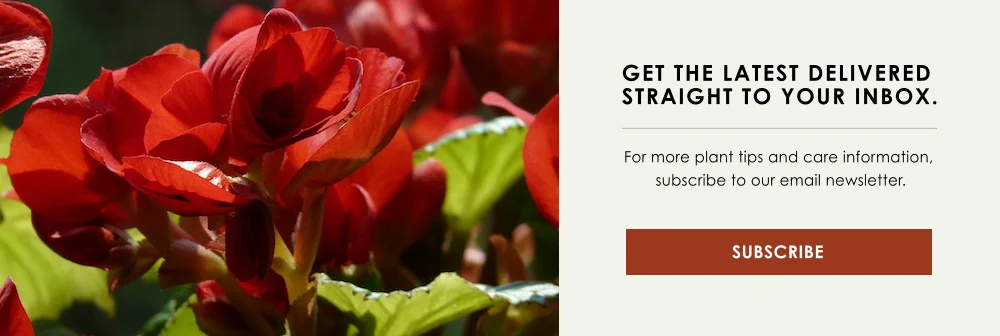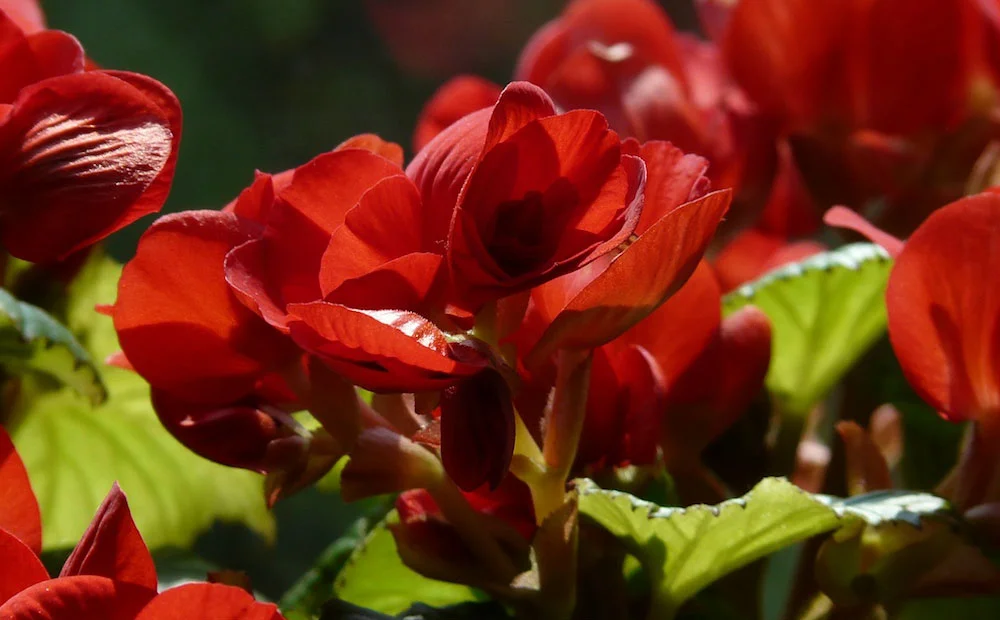PLANTING IN SHADE
Everyone has that shady spot in their garden where it seems impossible to keep plants from getting leggy or going limp. Planting in the shade isn’t a chore or an impossible task, it’s actually a great opportunity! Once you find your perfect match it’s actually simpler than gardening in the full sun in a lot of ways: the shaded soil stays moist for longer between waterings, which means less frequent maintenance. Filling up that shaded corner is a great way to sneak some color and life into your yard in unexpected places and transform an empty spot into a vibrant one. Here are some tips for gardening in the shade.
TIPS FOR PLANTING IN SHADE
No matter what plant you choose, these tips will help your sheltered plant thrive.
Identify Your Type of Shade
Not all shade is made the same, and before you choose your plants you’ll want to think about what kind of exposure they are getting so you can choose a good match. Whether its deep shade, partial shade, or dappled shade, you’ll need to know this to know what plants are going to succeed.
Identify Your Soil Quality
Have a look at the soil that’s in your chosen spot, and consider fixing it up now before you have a plant in the way. Think about the drainage the spot has and the nutrients available, and consider mixing in amendments to improve your soil quality as much as possible.
Add Ash - Ashes from a fire pit, or alternatively some sulphate potash from the store, are great amendments to help reinforce the strength of plants growing in the shade.
Add Organic Matter - Nitrogen-heavy fertilizers aren’t your friend in the shade. where your plants need time and proper nutrients for growing. A natural fertilizer like compost or manure is a great addition to the soil to nourish your shaded plant in all the right ways.
Make Room for Roots
Use a pitchfork to work some space into the ground where you’re planting so that roots have somewhere to grow, instead of being cramped in compacted soil.
Mulch Well
Mulch your plants generously after planting. Shade from the sun can mean shade from other elements like rain that your plant needs for water, so ensuring as much moisture is locked into the soil by the mulch as possible is a great idea for healthy results. 3 Inches of compost or bark mulch is enough.
PERENNIALS THAT GROW IN SHADE
There’s a huge selection of shade-loving perennials to choose from. For plants that pop right back into those shady areas year after year, try:
Hostas - These plants have fantastic foliage in many varieties, but are perfect choices for ground cover in the sun or shade.
Christmas Fern - The lush fern leaves of this plant are a way to add some drama and interest to your shady corner. Prepare for this plant to spread a little!
Bleeding Hearts - These dainty pink flowers are a garden classic and a perfect way to fill a deeply shaded area.
Hydrangeas - If shaded spots are for muted plants, nobody told hydrangeas about it. The jewel of many gardens, hydrangea shrubs are an explosion of color in the shade. We love them for lining fences and interior walls.
SHADE-TOLERANT ANNUALS
These plants have less time in your garden than your perennials do, but they certainly make up for their short visit with their stunning looks! With annuals, you have the option to mix it up with something different every year or plant more of your favorites.
Begonias - With shiny foliage and flowers of every color, it’s pretty easy to find a begonia that you love. Most of them thrive in part or full shade.
Lobelia - These dainty plants are a way to add a unique pastel shade to your ground cover. They thrive in the partially shaded parts of your yard.
Impatiens - These multi-colored annuals are the poster children of shade gardening. They might look a little like wildflowers, too, adding a fun charm to your garden.
Sweet Alyssum - These flowers not only look great with their white blooms, but they smell amazing. They also stick around, decorating your garden even past summer and into fall.
BULBS FOR THE SHADE
Bulbs are sturdy, reliable plants that are often the focal point of a garden. These bulbs don’t mind a little shade, as long as they still get to be the star of the show.
Crocus - These always-elegant flowers are a classic choice for the late spring, coming in pretty white, purple, and yellow options.
Galanthus - Also known as Snowdrops, these flowers are early bloomers that give your garden a kick-start in the spring.
Daffodils - Perfect for shady areas that need a little brightening up, the signature yellow of these flowers add some sunshine where there isn’t any.
Tulips - For classic spring color, it’s hard to beat the tulip. They’re highly adaptable and can bloom almost anywhere, from part sun to full shade.
Shed some light on some of these new options for those shady locations in your garden! With these shade-loving plants, you can take full advantage of every square foot of your garden. Add a few shade-loving plants this spring and watch how they brighten your whole yard.





